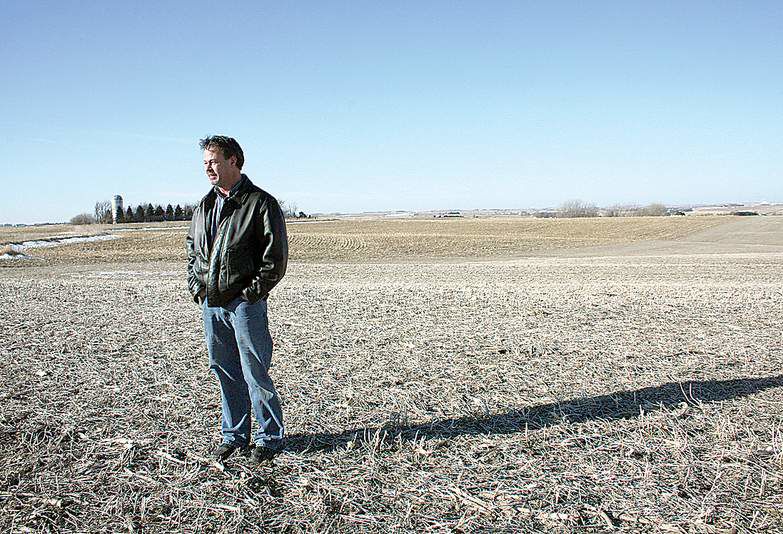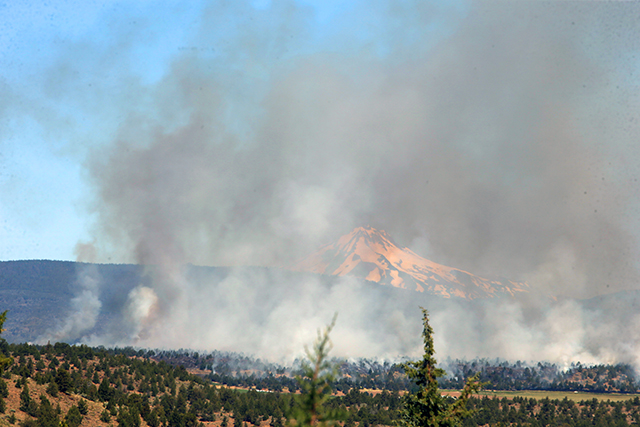As farmland prices surge, regulators warn of a bubble
Published 4:00 am Friday, March 4, 2011

- Jeff Freking recently purchased this farmland in Oyens, Iowa, for $10,000 an acre. Freking bought a similar farm for $6,000 an acre just two years ago.
The 80 acres of rich farmland that Jeff Freking and his brother Randy bought recently near Le Mars, Iowa, for $10,000 an acre would seem to have nothing in common with a condo in Miami or a house in Las Vegas.
But as prices for agricultural land surge across America’s grain belt, regulators are warning that a new real estate bubble may be forming — echoing the frothy boom in home prices that saw values in Miami and Las Vegas skyrocket and then plummet.
“It just seems to be going up in leaps and bounds here,” said Jeff Freking, who bought a similar farm for $6,000 an acre just two years ago. “Everybody thinks it’s crazy.”
The surge in prices has been dizzying throughout the Midwest, with double-digit percentage increases last year in Illinois, Indiana, Iowa, Kansas, Minnesota and Nebraska. In parts of Iowa, prices for good farmland rose as much as 23 percent last year, according to the Federal Reserve Bank of Chicago.
Just a few years ago, farmers marveled as land prices began to rise in response to demand for corn to make ethanol. More recently, soaring prices for wheat, corn, soybeans and other crops have driven the increase. Corn futures on the Chicago Board of Trade closed at $7.27 a bushel on Tuesday, up from $3.70 a year earlier. Soybean futures were $13.67, up from $9.52 cents on March 1 last year. Average grain prices, adjusted for inflation, are nearing the giddy levels they reached in the late 1970s, the peak of the last disastrous boom-and-bust cycle for agricultural land.
That has regulators worried.
A ‘huge’ risk
“History has taught us that it is nearly impossible to determine how much of the farmland boom may be an unsustainable bubble driven by financial markets,” said Thomas Hoenig, president of the Federal Reserve Bank of Kansas City, in testimony before the Senate Agriculture Committee last month.
Officials at Hoenig’s bank warn that farmers face a “huge” risk that rising interest rates, perhaps combined with falling crop prices, could undercut land values. Farmland values could drop by a third to a half in such a situation, Hoeing testified.
Prices have risen so far so fast that “it’s getting scary,” said Mike Green, a real estate auctioneer. He brought the hammer down in February on a 118-acre farm in Yetter, Iowa, that sold for $11,000 an acre, which he said was a record for farmland in Calhoun County, in western Iowa. In December, Green said, he got oohs and ahs when a parcel went for $9,300 an acre. Last fall, similar farms were selling for less than $8,000 an acre.
“It’s very hard to guess what a property will sell for these days because it seems like it’s been changing on a weekly basis,” he said.
An attractive asset
Farmland values have been pushed up by several factors. As crops like corn, wheat and soybeans bring higher prices, the land on which they are grown becomes more valuable. Low interest rates have also contributed; they draw investors seeking an alternative to low-yielding certificates of deposit and the volatile stock market as well as create an incentive for farmers to buy more land rather than invest their profits elsewhere.
“Farmland has been a favored asset class in a world where a lot of other asset classes have fallen out of favor,” said Richard Brown, chief economist of the Federal Deposit Insurance Corp.
The rapid rise in agricultural land prices has raised alarms at the FDIC, which insures bank deposits and monitors the industry’s financial health. The agency sent a letter to lenders in December, warning them to not let high farm land values lull them into lax lending practices. Next week, the FDIC will hold a forum in Washington to discuss its concerns.
“If it were to be a bubble,” Brown said, “it would be in its formative stages.”
Little agreement
Today’s farmland market has some crucial differences from the 1970s bubble and the housing boom of the last decade. In the 1970s, another period of low interest and high crop prices, farmers loaded up on debt, using their farms as collateral. In the housing bubble, many buyers were seduced by gimmicky loans, such as subprime mortgages with floating rates, that magnified risk.
Today, farmers have about one-third less debt overall than they did at the peak of the last boom, according to USDA data.
But a big worry for regulators is that farmers will start taking out loans on property they already own, based on today’s elevated values, and use it to buy more property or make other purchases. That would be similar to what farmers did 30 years ago and what homeowners did in the housing boom.
There is no agreement on whether a bubble is emerging.
Michael Duffy, an agricultural economist at Iowa State University who conducts the annual land value survey, said the market appeared fundamentally sound and that land prices were responding properly to high crop prices. “If you’ve got good ground, it’s worth a lot of money,” he said.
Bruce Brock, the broker who sold the farm to the Freking brothers, exudes an optimism that would sound familiar to anyone who bought a home in 2006. “If you look from the beginning of farming in the United States to now, the long-term trend has been up,” he said. “There will be market fluctuations where it will go down. But in 10 years, I won’t be surprised if our $10,000 land is $20,000.”






